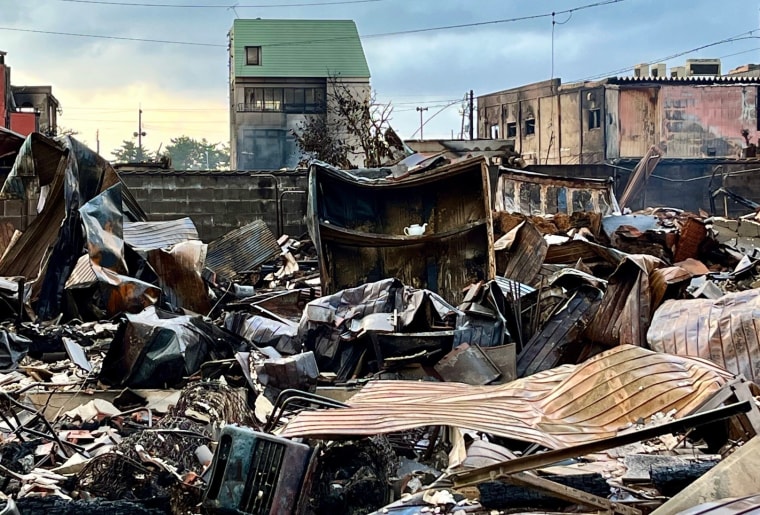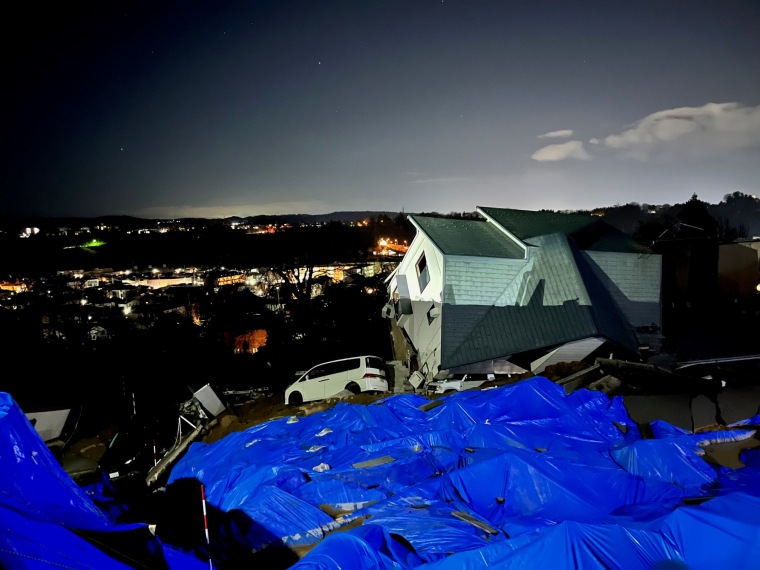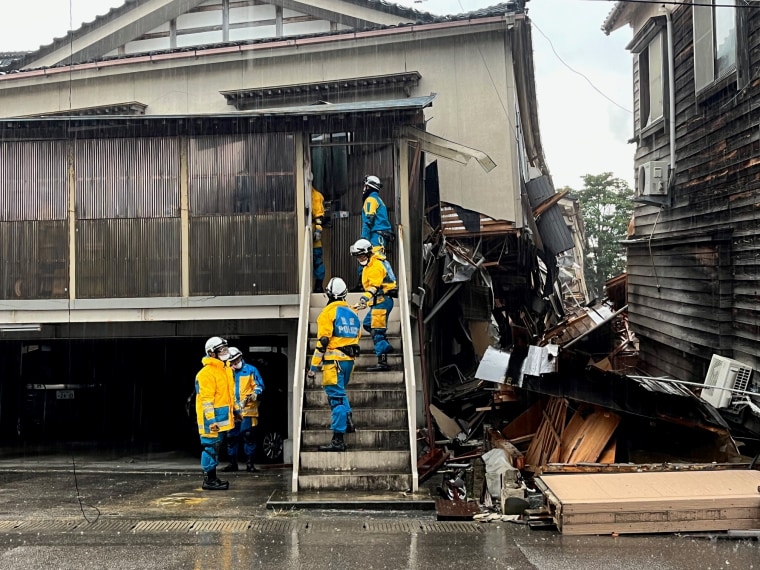Traveling through the mountains and up the coast allowed us to take in the scale of what happened. Every village we passed was damaged and appeared eerily empty of people. The tsunami warning forced extensive evacuations, and few people had yet to return. Officials have urged people to stay away from their homes for now because of the high risk of another strong earthquake.
In Kuroshima, a protected historic site on the outskirts of Wajima, the temples and traditional wood buildings had been through many earthquakes before. But the force of this one was different, leaving several of the old structures in ruins. Like many communities across the Noto peninsula, most of the residents are elderly.
“They may not have the energy, resources, or time to rebuild,” one man told us. “The sense of loss is quite profound.”
Looking out toward the sea offered signs of how Japan’s landscape had been altered there, too. Experts say the tectonic shifts from the quake pushed the ground up 13 feet in some areas and moved it sideways by more than 3 feet. The ocean floor is now higher.
From Kuroshima, you can see a breakwall but there is water on only one side of it. The local port appears to have shifted up and over, we were told, making it too shallow for local fishermen. There is also now a wide expanse of beach that did not exist before.


Wajima straddles a cove on the peninsula, just 20 miles from the epicenter of the earthquake, the strongest to rock the country in nearly 12 years. There have been more than 600 aftershocks, according to Japan’s Meteorological Agency, that have knocked out water infrastructure and electricity. Outside a recreation hall now being used as an evacuation center, the clock is stuck at 4:10pm — when the biggest of the earthquakes hit.
The death toll has reached 126, according to officials, and more than 200 people remain unaccounted for or trapped in the rubble. Experts talk about a 72-hour window to reach survivors, and that deadline has now passed.
Still, rescue crews are being urged by Japan’s prime minister, Fumio Kishida, to keep trying to save as many lives as possible. On Thursday, an 87-year-old woman was pulled from under the collapsed first floor of her house here where she had been trapped and conscious for days. Aftershocks are complicating recovery efforts, as is the cold and rainy weather.
There are thousands of military and police personnel working with dogs and helicopters as part of the search and recovery effort. In Wajima, teams are going door-to-door, checking for survivors, and looking for bodies. We watched one crew in yellow and blue uniforms carefully remove pieces of debris from the entrance of a heavily damaged house. They called out, then used tools to pry open the door, their flashlights glowed through windows with shattered glass and blowing curtains. They found nothing, or no one, and moved on to the next site.

More than 10,000 people in Wajima alone are living in evacuation centers. The need is vast, and supplies have been slowly trickling in. Volunteers are making meals and serving coffee, and sharing what they have with those who need it.
“We’re making over a thousand meals a day,” one volunteer said. “I’m happy to help.”
As the rain stopped and the day was losing light, I walked around the wasteland of the market, past burned-out cars and under fallen power lines. A few taller buildings are still standing but marred by fire. We had heard that several people sought refuge there that night from the possible tsunami, then became trapped by the fire.
Japan is a country well-prepared for earthquake disasters, but it could take years to pick up the pieces here and likely longer to recover. At an intersection in Wajima, there is a seven-floor building that has fallen on its side. Its balconies and windows are still mostly intact, and the traffic light pinned underneath is still diligently working.
Source: | This article originally belongs to Nbcnews.com










